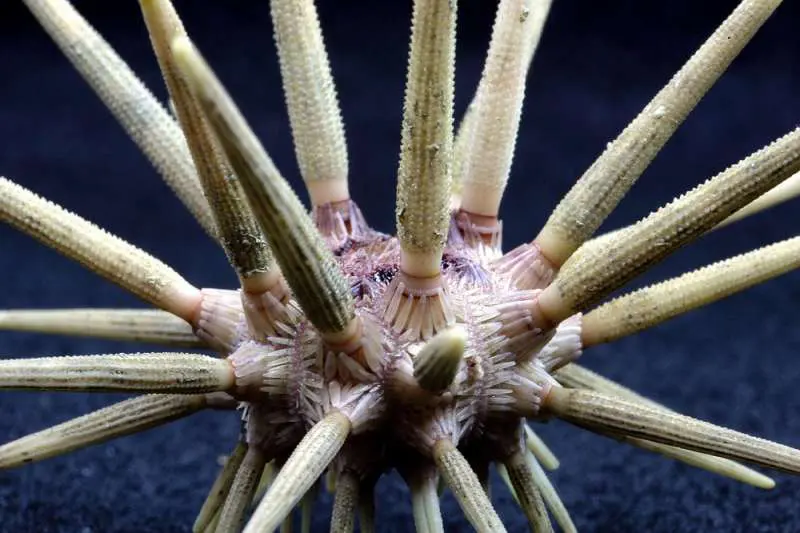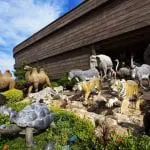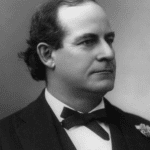 As I scanned the display of familiar Kansas fossils, taking lots of pictures for my personal research record, there was one oddly shaped fossil that didn’t quite seem to fit in with the others. But, with the overwhelming number of fossils at the annual fossil show in Tucson, I didn’t give that fossil much thought until recently. It looked like two globs of pale tan against the gray surrounding rock that had spikes sticking out of them in a random pattern. They were sea urchin fossils. What’s remarkable about them is that they look almost identical to the live sea urchins we find in the oceans today.
As I scanned the display of familiar Kansas fossils, taking lots of pictures for my personal research record, there was one oddly shaped fossil that didn’t quite seem to fit in with the others. But, with the overwhelming number of fossils at the annual fossil show in Tucson, I didn’t give that fossil much thought until recently. It looked like two globs of pale tan against the gray surrounding rock that had spikes sticking out of them in a random pattern. They were sea urchin fossils. What’s remarkable about them is that they look almost identical to the live sea urchins we find in the oceans today.
When you think “fossil”, dinosaurs and other strange creatures that are considered “extinct” probably come to mind. But, did you realize that our modern oceans, beaches, forests, and yards are crawling with all kinds of living things we find throughout the fossil record? “Living Fossils” are creatures found in the fossil record that are also alive today, like the sea urchin fossils.
Living fossils present a big problem for the idea of pond-scum-to-people-evolution. The word “evolution” just means change – change over time. Living fossils are a problem for evolutionary ideas because they are creatures that have not been changing, even over vast amounts of time (at least, in theory). We tend to want to depict dinosaurs living in strange worlds with other odd creatures, unlike anything we see today. But, taking a better look at the fossil record, you can see that many fossil creatures look an awful lot like the modern creatures we have today. A big, long-necked Apatosaurus could have munched the branches of a tree just like the one in your yard; sea creatures you find in an aquarium today, like coral, eels, rays, and jellyfish were there when fierce mosasaurs roamed the seas.
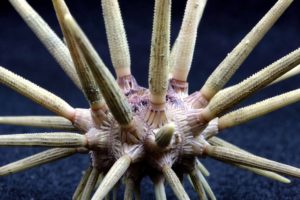
https://pixabay.com/en/pencil-urchin-sea-life-ocean-water-139403/
Aquatic creatures are the most common type of fossils, and living fossils swimming in our modern oceans are also quite abundant. Those sea urchin fossils I mentioned at the beginning were from central Texas, found in the Winchell Limestone. This rock layer is officially classified as part of the Pennsylvanian group (read more about rock layer grouping & the geologic column here). According to evolutionary theory, those sea urchins are supposed to be about 300 million years old, yet, the fossil looks an awful lot like the modern Pencil Sea Urchin. We find star fish, sea cucumbers, sponges, various corals, and sand dollars, to name a few that are all considered at least 65 million years old (i.e., living with the dinosaurs, according to evolutionary ideas). Crinoid (sea lily) fossils look a lot like modern “sea lilies”, virtually unchanged after a supposed 400 million years of evolution.
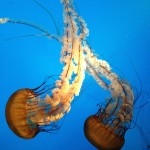
https://pixabay.com/en/jellyfish-aquarium-wildlife-aquatic-695127/
If “evolution” keeps the crinoid, jelly fish, sea urchins, and other things unchanged for hundreds of millions of years, why would we expect fish to grow legs and start walking and change into lizards, dinosaurs, and a variety of mammals all within that same timespan? Why would these creatures stay the same over those vast amounts of time? Perhaps a better explanation is that 1) they really haven’t been around hundreds of millions of years, 2) each basic type of creature was fully-formed from the start, with the ability to diversify within limits (e.g., different breeds of dogs, but all are still dogs), 3) all of the animals we know of today lived at the same time because they were all created at the same time, and 4) fossils were buried during different stages of the global flood, just a few thousand years ago.
Over the next few of weeks, we will be digging in to more of the different types of living fossils and what they mean. Living fossils are a beautiful illustration of the faithfulness of God. He not only created all of these marvelous creatures we see in our world today, but He also preserved them through the global flood. May living fossils be a reminder to you that the Lord is faithful in His love for you and His desire to preserve you:
Now to Him who is able to keep you from stumbling, and to present you faultless before the presence of His glory with exceeding joy, to God our Savior, Who alone is wise, be glory and majesty, dominion and power, both now and forever. Amen. ~ Jude 24-25
©2017, Sara J. Bruegel
References:
- Werner, Dr. Carl. Living Fossils. Evolution: The Grand Experiment, Vol. 2. 2008. Audio Visual Consultants, Inc. New Leaf Press. Green Forest, Arkansas, USA.

